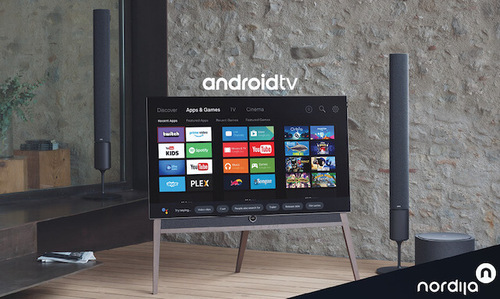Android TV: The Future of Television?
Google's TV platform may be the best hope for a future in which pay TV and OTT exist side by side.
There's the traditional operator set-top box (STB), and then there are streaming devices for OTT, and the two are usually seen in competition. Google's Android TV platform bridges the two by aggregating broadcast content with streaming services, giving pay-TV operators a fighting chance to take back control of the remote.
Google has signed up more than 160 operators worldwide, including AT&T, Bouygues Telecom, J:COM, and LG U+, to deliver on the Android TV platform to fight consumer flight from pay-TV services, which, last year, were in use in 65.3% of U.S. households, down from a high of 87.8% 10 years earlier. Similar trends have played out in other countries.
"Android TV provides operators with a full-stack operating system to help them build a complete TV experience for subscribers, bringing linear TV and streaming services to one place, accessible by voice," says Shobana Radhakrishnan, director of engineering for Android TV at Google. "Operators get first billing on their own systems." Plus, their consumers get search, voice, content discovery, personalization, interface customization, Android app store connectivity, and even smart home control as standard features. "This helps operators bring a full entertainment package to subscribers that goes beyond traditional paid services," Radhakrishnan says.
"Classically, a streaming provider would be used to having their whole user experience contained in an app, like a Netflix or YouTube. It's an app icon somewhere or button on the remote control, and once the user enters that, the user experience starts. The pay-TV operators are much more used to the whole device experience [being] branded and [a] focus on their service," says Sascha Prüter, chief product officer at Vewd. Some operators completely design the user experience and have it branded the exact way they prefer, like AT&T with its TV Now service.
Hey, Google, how does this impact consumers? The first step was to make this as plug and play as possible. New pay-TV customers can often get up and running without human interaction if the STB can automatically connect online to the home router. Viewers enter credential information and, depending on the service, can personalize the experience if the provider asks for additional details.
"We believe operators know their subscribers best and are therefore best-suited to build the right TV service for them. The key element was giving operators the flexibility to build a custom launcher and replace the Google standard launcher, thus owning the user experience while still offering all the capabilities of the platform," says Radhakrishnan.
Making STBs Smart
Older cable devices simply couldn't handle all the functionality that today's multitasking modern customer seeks, such as app use; DVR, live, and catch-up viewing; higher-resolution delivery; and smarter personalized programming. "A lot of [operators] tried to do that with a legacy STB, but the system was not really application-oriented by design," says Hervé Creff, business development director at Broadpeak.
One big plus is that development for the Android TV platform is done via web technologies instead of platform-specific development languages. "They're utilizing a technology that's already well-known by developers," says Thomas Christensen, CEO of Nordija. "Our user interface [UI] does not exist on the set-top box until it's turned on and pointed towards our portal, on the operator's own network or in the cloud. Then the whole user experience is downloaded and delivered in classic web HTML format.

Because Android TV uses HTML, you don’t need to load a full user interface onto the device, meaning it can work within the memory available on a wide range of devices, according to Thomas Christensen of Nordija, whose Android TV implementation is shown here.
"The point of using HTML is it's dynamic, so you don't need to load the full UI onto the device—only what's needed. For something like an EPG (electronic programming guide), you don't have to download the full seven days' worth of data for 600 channels," says Christensen. This means that Android TV can work on the memory available on a wide range of devices.
"It's a software layer, so that gives it a lot of advantages in terms of being able to be deployed in many additional areas, even like things like soundbars," says Tom Schaeffer, president and CEO of Float Left Interactive. "It has access to Google's services, so when you're part of Android TV, you're tapping into that wide range of various services."
Search is one service that's crucial to getting viewers to watch more, responding to user input by text or voice and featuring the ability to set preferential business rules. For instance, the integrated Google Assistant voice control could return search results that were tailored to WarnerMedia's content. A provider like AT&T could highlight its own featured content and streaming apps within the programming guide, as well as other third-party apps that either came with the offering or were installed by viewers.
By Nadine Krefetz
David https://markethive.com/david-ogden
